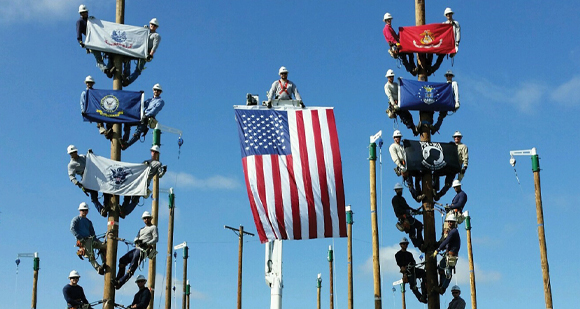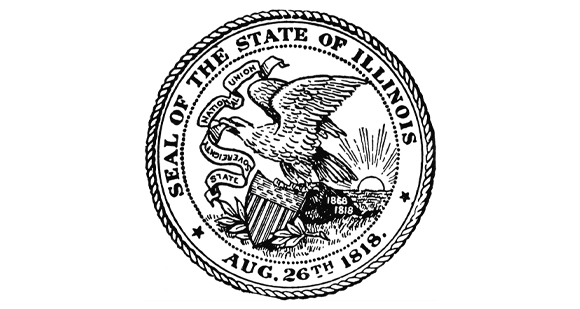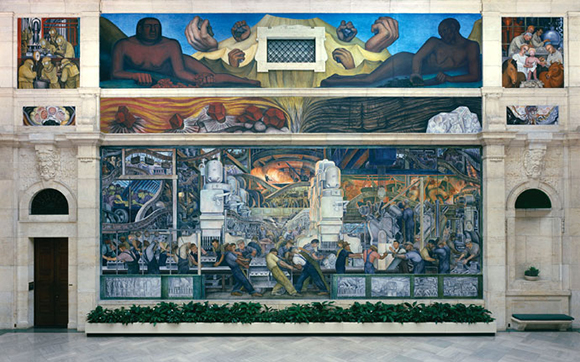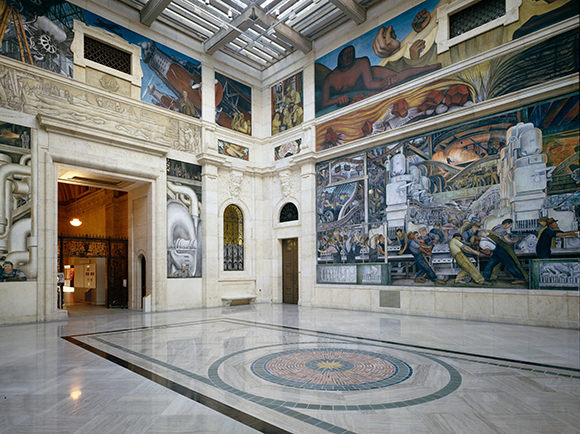|



|
FROM SITE SELECTION
MAGAZINE, SEPTEMBER 2022 ISSUE
|

|
CANADA
Led by 10 municipalities and regions in top competitive province
Ontario, these two dozen areas from Halifax to Vancouver showcase
Canadian economic development momentum. Track down these areas and
dozens more in the Canada economic development directory.
|
|

|
TOP UTILITIES 2022
The Top Utilities in Economic Development are there to help businesses
steer around challenges so they can grow and prosper no matter what the
weather or the business climate deliver. Find even more high-performing
utility economic development teams in our annual utility directory.
|
|
 
|

The San Francisco Bay Area is tops in tech talent no matter which index
you’re using.
Photo by Epic Trails | Heliconia courtesy of
San Francisco Travel Association
|
|
Readers familiar with CBRE’s annual “Scoring Tech Talent” report can now compare and
contrast that scorecard’s findings with those found in a new report from
service provider rival Cushman & Wakefield, “Tech Cities: The Global Intersection of Talent and
Real Estate.” Or let us do some comparing and contrasting for
you.
In its 127 pages, the in-depth CBRE report not only ranks the top 50
largest tech talent markets by 13 metrics, but also examines 10
up-and-coming Latin American markets and 25 up-and-coming markets in the
U.S. and Canada. A plethora of charts breaks out top markets by tech
disciplines, and also ranks markets by estimated one-year wage and rent
costs for a typical tech firm: The Bay Area, New York and Seattle are
the costliest, while eight Canadian markets are the least costly, with
Quebec City the most inexpensive. Here are the top-ranked tech talent
markets:
CBRE 2022 “Scoring Tech Talent” Rankings
- Bay Area
- Seattle
- Toronto
- Washington, D.C.
- New York Metro
- Austin
- Boston
- Vancouver
- Dallas-Ft. Worth
- Denver
- Atlanta
- Los Angeles/Orange County
- Ottawa
- Baltimore
- Montréal
For its part, Cushman & Wakefield evaluates “more than 115” tech cities
globally according to 14 criteria and identifies what it says are 46 top
tech markets. However, rather than rank them globally or even by region,
it breaks out lists by world region and presents the group
alphabetically, allowing the reader to use tools to sort them out by
various criteria such as talent pool, talent cost and cost of office
space. Toggling world regions on and off allows live comparisons within
a single region or across them. For instance, Toronto is the most
competitive in the Americas in terms of talent, but the pool is smaller
than in the Bay Area, which leads the Americas when blending
competitiveness and size of pool. Add in the EMEA and APAC regions and
viable options pop up in London, Beijing, Paris and Tokyo. The report
also features 50 pages of market summaries once you’re ready to drill
down and see details such as top tech occupiers and transactions, asking
rents and projects under construction, complete with local market
research contacts.
The Cushman & Wakefield tool features 19 markets in the U.S. and Canada,
including the top 12 in the CBRE ranking. Below are the highest-ranked
CBRE tech talent scores that don’t make Cushman & Wakefield’s more
global list. — Adam Bruns
| CBRE Rank |
Market |
| 13 |
Ottawa |
| 14 |
Baltimore |
| 17 |
San Diego |
| 18 |
Salt Lake City |
| 21 |
Minneapolis-St. Paul |
| 23 |
Portland, Oregon |
| 24 |
Waterloo |
| 25 |
Detroit |
|
|
 
|
|
2022 ILLINOIS
INVESTMENT GUIDE
|

|
LETTER FROM THE GOVERNOR
“This year’s Illinois Investment Guide comes amidst the best time to do
business in Illinois in recent memory,” writes Gov. JB Pritzker, before
explaining why that’s the case.
|
|

|
BUSINESS CLIMATE OVERVIEW
Chicago and the state perform at an elite level in winning capital
deals.
|
|
ANNUAL BUSINESS CLIMATE RANKINGS
The editors of Site Selection are preparing the annual Business Climate
rankings, and we need your help. A key part of the rankings that appear
in our November issue is input from you on which states have the
business climates you find most attractive. Please take a minute to
respond to the simple survey that follows. The deadline is Friday,
September 2nd. Click on the following survey link to take this survey:
https://forms.office.com/r/0aATZimz43
|
|
|
SITE SELECTION
RECOMMENDS
|
South Korea
Last week SK Geo Centric announced its JV with Saudi Basic Industries
Corporation (SABIC) known as SABIC SK Nexlene Company (SSNC), will
construct a a high-performance chemicals factory in Ulsan City. Nexlene
is a high-performance product developed by SK Geo Centric in 2010 using
ethylene as a raw material. The expansion will produce 210,000 tons of
Nexlene products annually. “This new and expanded project will increase
its annual output by 43% to 300,000 tons, while exporting more than 90%
of its output overseas,” a release from SK Geo Centric stated. The
investment is aimed at actively responding to the rapidly increasing
market demand for high value-added environmentally friendly materials in
automobiles and solar energy, the company said, including polyolefin
elastomers (POE), polyolefin plastomers (POP) and linear low density
polyethylene (LLDPE). “By developing excellent high-performance
products, South Korea’s Nexlene has broken the market pattern once
monopolized by global petrochemical companies such as Dow Chemical,”
said the release, “and is achieving rapid development.”
Pennsylvania
Last week ElevateBio and the University of Pittsburgh announced that
they have entered into a long-term strategic partnership to accelerate
the development of “highly innovative cell and gene therapies” at one of
ElevateBio’s next BaseCamp process development and Good Manufacturing
Practice (GMP) manufacturing facilities at the Pitt
BioForgeBioManufacturing Center at Hazelwood Green, created by the
University of Pittsburgh after a $100 million grant from the Richard
King Mellon Foundation that was announced last November. “To realize our
vision of transforming the cell and gene therapy field for decades to
come, broadening our footprint across metropolitan areas is a key
priority for us, and we are thrilled that the University of Pittsburgh
will be home to one of our BaseCamp facilities,” said David Hallal,
chairman and CEO of ElevateBio. “We’ve identified Pittsburgh as an ideal
location to extend our BaseCamp presence as it sits at the intersection
of science, technology, and talent.” Supported by such organizations as
the Pittsburgh Regional Alliance (the economic development affiliate of
the Allegheny Conference on Community Development), the project has been
offered incentives from the county and from the Commonwealth of
Pennsylvania. “We are excited that Pitt, working with UPMC Enterprises,
has attracted ElevateBio to this region,” said Leslie Davis, president
and CEO of UPMC (University of Pittsburgh Medical Center). “The
company’s expertise and manufacturing capabilities, combined with Pitt
research and UPMC’s clinical excellence, are essential to delivering the
life-changing therapies that people depend on UPMC to deliver.”
|
|

|
The approaching U.S. Labor Day holiday is a good time to examine two
images of one of Diego Rivera’s most accomplished murals — “Detroit
Industry” — on the walls of a court inside the Detroit Institute of
Arts. Rivera created the frescoes between April 1932 and March 1933 and
the overall work was presented as a gift to the city by Edsel B. Ford.
“The themes established on the east wall are continued on the west wall,
where the technologies of the air (aviation) and water (shipping and
pleasure boating) are represented in the upper panels,” says a DIA
description. “The half-face/half-skull in the central monochrome panel
symbolizes both the coexistence of life and death as well as humanity’s
spiritual and physical aspects, while the star symbolizes aspirations
and hope for civilization. This heraldic image introduces another major
theme of the cycle: the dual qualities of human beings, nature and
technology. Vertical panels on each side of the west entrance to the
court introduce the automobile industry theme through the representation
of Power House No. I, the energy source for the Rouge complex,” the Ford
manufacturing site now receiving a major investment to expand production
of the F-150 Lightning electric truck.
|

|
Images courtesy of Detroit
Institute of Arts
|
|
|
|
|

